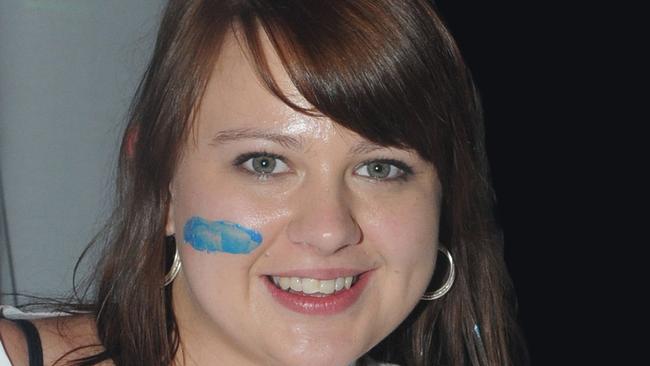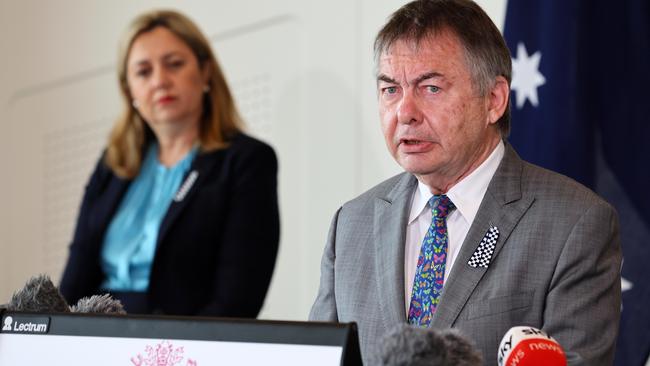Shandee Blackburn’s murder played ‘pivotal role’ in exposing lab failings
The 2013 Mackay killing was crucial to revealing the deficiencies of the state-run lab, inquiry head says.

The murder of a young woman on the streets of Mackay in 2013 played an “extraordinary and pivotal role in the exposure of the failings of the state-run DNA laboratory”, according to DNA Inquiry head Walter Sofronoff KC in his final report.
Mr Sofronoff devoted more than 10,000 words of his report to his findings about the DNA laboratory’s poor handling of crime scene samples from the police investigation of the murder of Shandee Blackburn in February 2013.
At the end of his final report he dedicated the inquiry’s work and findings to Shandee’s memory.
“Just as I have sought to assess the reliability and accuracy of the DNA testing at the laboratory more generally, I have also sought to investigate and understand the testing undertaken in Ms Blackburn’s matter,’’ Mr Sofronoff states in the inquiry’s final report.
“The balance of the expert evidence before me in this case supports a conclusion that there are a number of issues which may have contributed to the unexpectedly poor performance of some samples in the Blackburn case.”
At a media briefing with Premier Annastacia Palasczcuk minutes after his report was made public, Mr Sofronoff said that in his view it was possible that retesting of DNA from Shandee’s case could still expose her murderer.
His report documented the lab’s poor controls, contamination and other problems relating to the introduction of complicated new equipment and processes shortly before the February 2013 slaying.

“I understand from the experts that while further testing and investigation of particular issues are warranted, it is likely that much will remain uncertain, given the passage of time and the complexity of the contributing factors,’’ he wrote.
“This a sombre finding to make in a case of such deep tragedy and loss. While the Blackburn case has demonstrated that the laboratory was not functioning well as early as 2012, providing context for later developments, this can be of little comfort to the family of the young woman whose death it concerns.
“The uncertainty surrounding the evidence in this case and the attendant anguish of the Blackburn family has served as a constant reminder of the deeply human element at the heart of the work of the Commission.
“It can be hoped that the profound reframing of how DNA evidence is processed, analysed, reported on and understood in our criminal justice system may in time be seen as an enduring legacy of all of those who have raised their voices to bring these issues to light. I have heard them.”
Most samples in Shandee’s case were taken from three areas – her body including her clothing, from the scene of the murder near her mother’s house, and from the car of the primary suspect, John Peros, her former boyfriend.
Peros was found not guilty of murder after a Supreme Court trial in Mackay in 2017.
In 2020 he was found by the Mackay Coroner at the end of an inquest to have been Shandee’s killer. He has always strenuously asserted his innocence and is suing The Australian, this journalist and Shandee’s sister Shannah Blackburn over comments in the Shandee’s Story podcast series which raised serious lab problems.

Walter Sofronoff said he relied on three experts – forensic biologist Dr Kirsty Wright who spoke at length in the Shandee’s Story podcast series about the lab’s failures in Shandee’s case, as well as DNA scientists Professor Bruce Budowle and Johanna Veth.
Ms Veth and Dr Budowle found that there were contamination and equipment defects which had an impact on quality control. The laboratory failed to maintain a proper case file and key documents were missing, making it impossible to determine important red flags including which “samples were affected by quality incidents”.
There was “a lack of oversight of the case overall” in a laboratory under pressure, experiencing a number of quality issues simultaneously and with heightened emphasis on turnaround times”.
The commissioner found no evidence “of deliberate wrongdoing or concealment on the part of the laboratory in this case”.
“Ms Blackburn’s case was one of the first to come through the laboratory after the implementation of a major change in DNA processing which occurred in late 2012,’’ he wrote.
But he found that the implementation of this major change was flawed, with ramifications including “the potential loss of (DNA) evidence”.
“This created a great risk of not detecting potentially probative, exculpatory or otherwise informative profiling results,’’ Mr Sofronoff wrote.
“I further find that the laboratory failed to conduct a review until three years after the implementation of (the new equipment and process), despite the decision of the management team to do so within six months. This failure prevented laboratory improvement and created a substantial risk of failure to identify weaknesses and take corrective actions where necessary.
“Ms Veth and Dr Budowle considered the failures were avoidable had the laboratory not rushed to implement both technologies by the end of 2012.
“Many of the samples of concern have been those located in the car of John Peros, identified by a scientific officer as blood, and which ultimately did not yield any DNA evidence. There has been, understandably, significant concern expressed at the idea that blood stains can return a result of no DNA detected.”
However, Mr Sofronoff found that these samples – some of which underwent presumptive tests indicating the possible presence of blood and were described by police as “blood” – may not have been blood after all. Further testing may shed more light on this question.
Another important finding was that almost all of the samples of concern from Shandee’s case were in batches extracted by one particular instrument which might have been “underperforming”.
The “opportunity to obtain probative results may have been lost, particularly for low DNA samples that would demand maximum extraction efficiency to obtain a profiling result”.








To join the conversation, please log in. Don't have an account? Register
Join the conversation, you are commenting as Logout